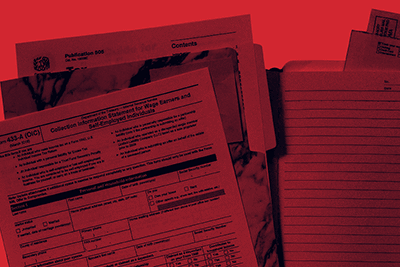Captive Insurance, Tax
Captive Insurance Arrangements Under the IRS Magnifying Glass
Article reading time: 2 minutes 30 seconds
Captive insurance arrangements long have garnered IRS scrutiny because of their potential as abusive – or illegal – tax shelters. In fact, micro-captives, arrangements that offer protection to just one or a small number of taxpayers, have been on the IRS’ “dirty dozen” list for several years.
Business owners who have captive insurance arrangements or are considering them should beware that $79 billion for additional IRS enforcement is contained in President Joe Biden’s Build Back Better Act, which has passed the House, and although stalled for now, is awaiting action in the Senate. If passed, this additional funding could focus IRS enforcement energy on captive insurance arrangements and significantly raise the potential for an IRS tax audit for businesses that have them.
Why the scrutiny?
Captive insurance arrangements have a legitimate purpose for businesses that can’t find reasonably priced insurance coverage for unique risks on the open market. Under a captive insurance arrangement, a company creates a licensed insurance company as a wholly-owned subsidiary, which exists to provide coverage solely to the parent entity. Captive insurance arrangements are common in the corporate world, and a majority of Fortune 500 companies – as well as many smaller businesses – have them.
The premiums the parent company pays to a captive insurance company are the captive’s only revenue and therein lies the rub as far as the IRS is concerned.
831(b) captives: a fine line
Captives with premium revenues under $2.2 million are not subject to taxation on those premiums under Section 831(b) of the Internal Revenue Code. They pay taxes only on investment income. Hence, a company can create a captive to insure against a specific risk, park $1 million in premiums with the company and pay no taxes on that money. Moreover, the company would receive a deduction since the premium payment is a business expense and could make gains on any investments made with the premiums.
Again, this may be a legitimate arrangement, particularly if the company is insuring against an unusual or very costly potential disaster such as a ransomware attack or losses related to a worldwide pandemic.
On the other hand, the arrangement could be a scheme to shelter income, thereby evading taxes. Because of the prevalence of abusive captive insurance schemes over the years, the IRS is gunning for them.
The IRS is watching
The IRS in January 2020 announced the formation of 12 new examination teams to audit taxpayers that participated in micro-captive insurance transactions. Those audits have resulted in a settlement offer for certain taxpayers that denies the tax deductibility of certain payments to a micro-captive while eliminating the need for the micro-captive to include such payments in its taxable income.
It’s fair to anticipate that the IRS, with a new infusion of enforcement funding on the horizon, will step up its scrutiny of captive insurance arrangements even more.

